Gravity’s Most Extreme Effects Can Now Be Tested In A Laboratory

And because of it, we can learn about quantum entanglement across a black hole’s event horizon.
This article was contributed to Starts With A Bang by Sabine Hossenfelder, whose blog, Backreaction, can be found here.
“It’s not the job of the theorist to defend his model at all costs!” –Joel Primack
South of the German city of Koblenz, the river Rhine narrows over a stretch of 30 miles, forcing its already strong current to increase. Speckled with underwater rocks, this route was once a risky cruise. It is the subject of legends and folk tales. It plays a prominent role in Wagner’s operas. It’s also a black hole.
If your boat is upstream of the river’s high-speed section and doesn’t have an engine powerful enough, the passage where the river narrows and accelerates acts like an event horizon: once you cross it, there’s no return. No matter what you actions you take, you will inevitably be sucked downstream with the flow.
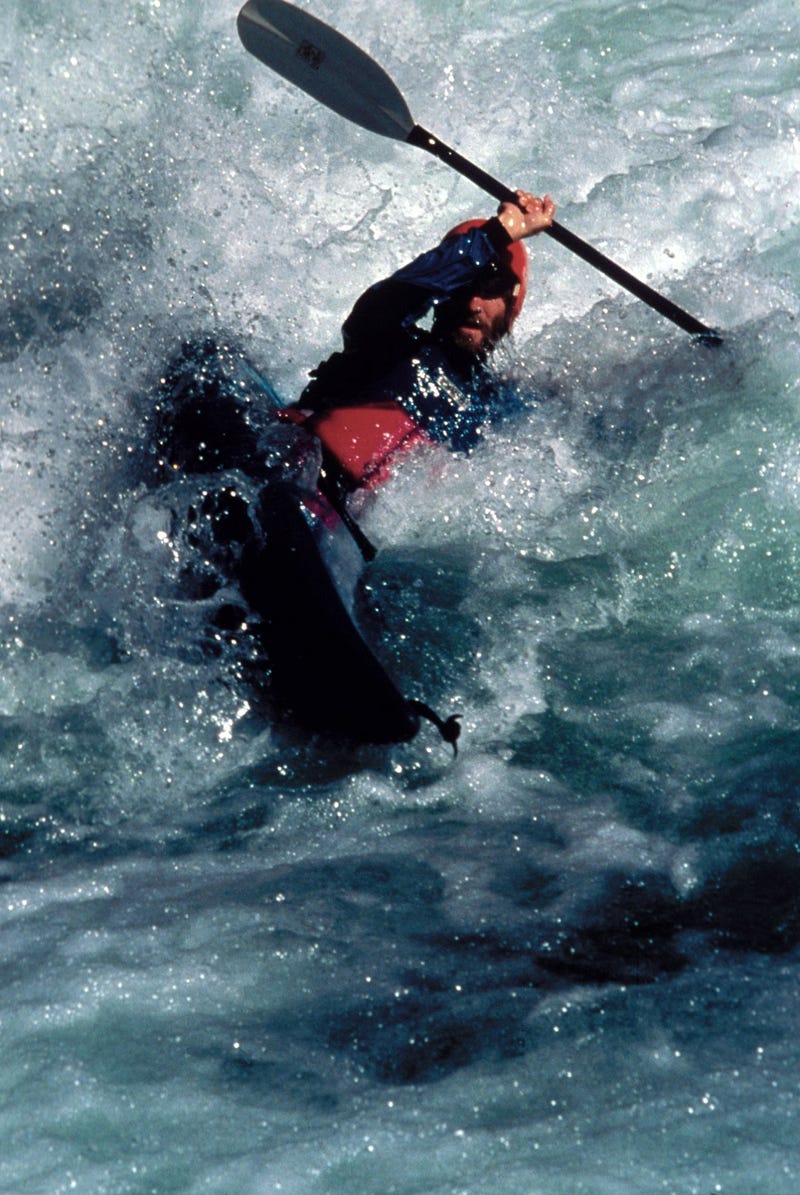
This analogy between gravity and fluids with varying speed is much more than a simple metaphor; it can be made mathematically precise. To derive a relation between gravity and fluids, physicists don’t study boats — which could move with arbitrary speed — but waves, whose speed depends only on the properties of the fluid itself. If the fluid’s speed exceeds the wave’s speed, then waves cannot travel upstream. It’s like being onboard one supersonic plane leading another: you can’t hear the engine noise of the second. Only for black holes, it’s the light that can’t escape, rather than the sound.
This analogy doesn’t only work for surface waves, but also for sound waves in flowing gases. If you push gas through a narrow channel, thereby increasing its speed so much that it exceeds the speed of sound, you create an acoustic horizon. No sound can cross the acoustic horizon because the gas is flowing too fast.

Sound-traps of this type have been coined “dumb holes” by Bill Unruh, who pioneered the idea that gravity can be mimicked by fluids in the mid 1980s. Since then, this field of “analogue gravity” has flourished. Physicists have found many other systems where waves travel like in strong gravitational fields, and they devised ways to simulate not only black holes, but also rapidly expanding spaces like that of the early universe. And all this can now be done in the laboratory just by observing how perturbations travel in fluids or gases.
This video shows an experiment by Silke Weinfurtner and collaborators at the University Of Nottingham.
You see water flowing through a container with an obstacle that increases the water’s speed. The researchers can then measure how the waves travel and how they are correlated.
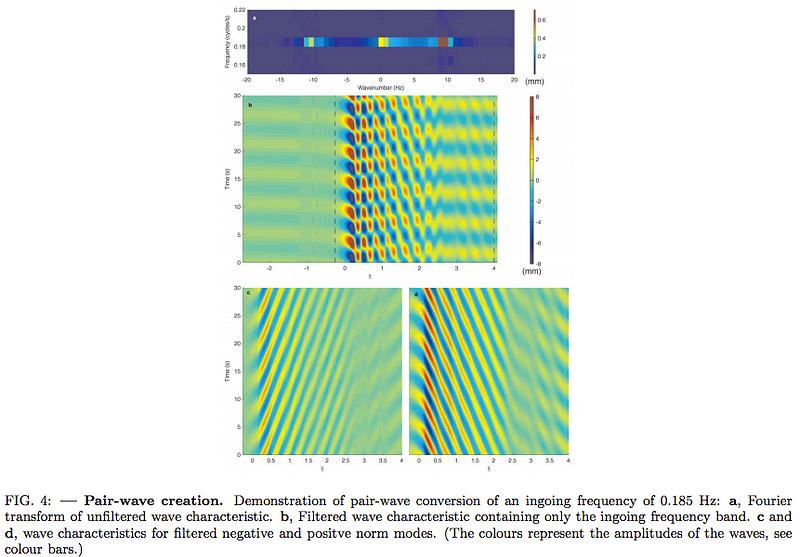
Sound waves in these types of systems obey the same equations as does light under the influence of gravity, with the speed of light replaced with the speed of sound. The waves even obey the symmetries of Special Relativity, at least as long as one stays within the validity range of the approximation. This makes it possible to experimentally test the behavior of matter under the influence of gravity, and study situations that we cannot otherwise observe.
Physicists would like to know, for example, what happens nearby black holes or close (in time) to the big bang. This is most interesting when the waves also have quantum properties, in which case particles — known as phonons — are associated with the waves. For the purpose of studying quantum behavior, however, water will not suffice.
In the area of analogue gravity, theory has long been ahead of experiment, but recently experimentalists have caught up, and they are now able to also test quantum behavior. For the fluid-gravity analogy, one uses an approximation for fluids of low viscosity, which means that superfluids with near-zero viscosity are ideal systems test quantum effects. For the superfluids, physicists use condensates of a few billion atoms that are trapped and put in motion by lasers. But the technology is still experimentally challenging. It has only been in the last few years that physicists have been able to use superfluid condensates to investigate the most interesting case of analogue gravity: black hole evaporation.
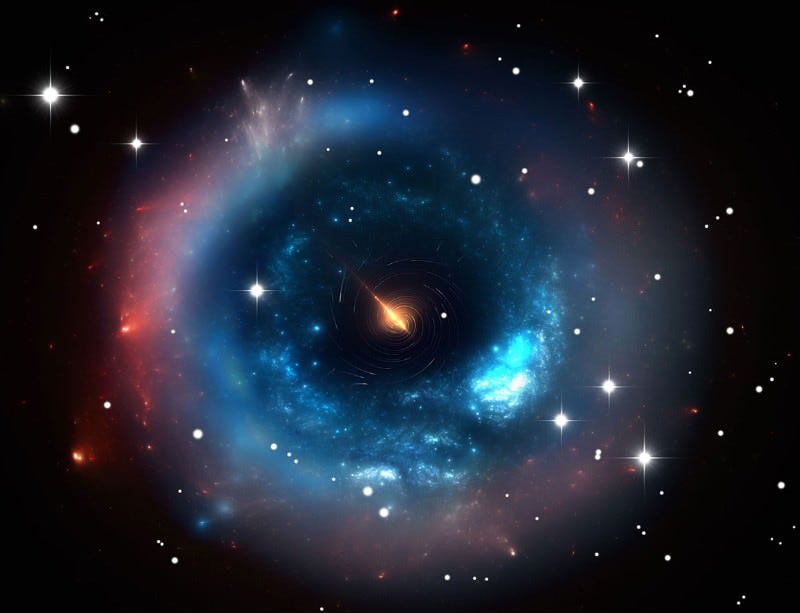
The evaporation of black holes is due to quantum effects of matter fields in the curved space-time close by the event horizon. This space-time can be simulated by a flowing fluid and, since the mathematical description remains the same, a similar radiation, composed of phonons (instead of photons), should be produced. This radiation was indeed observed two years ago, which confirmed the prediction made by Stephen Hawking in 1974, that the near horizon region — black hole horizon or acoustic horizon — produces a thermal distribution of particles.
The earlier experiment, however, could not confirm the Hawking radiation’s most interesting aspect: that the particles inside and outside the horizon share mutual information. According to Hawking’s calculation, they are “entangled partners,” which means that individually their quantum numbers have no distinct value; instead, they could share properties in several ways.
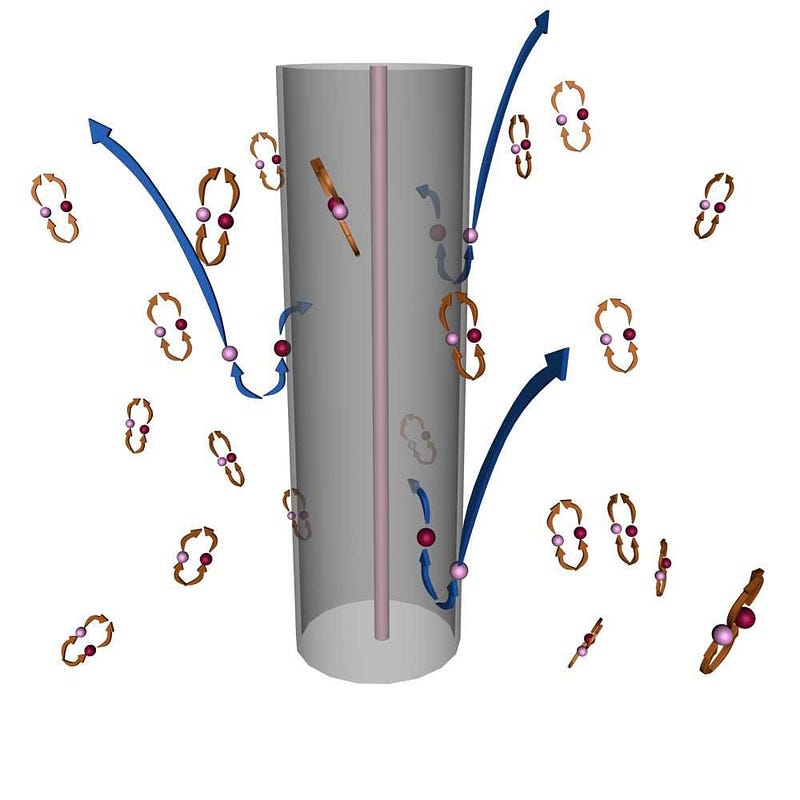
A typical example of an entangled pair are two particles with total spin zero that move into opposite directions. Either the left-moving particle has spin +1 and the right-moving has spin -1, or the other way around. But that’s the only information we have at our disposal: the individual particles do not have a pre-determined value for their spins until measured. The particles of the Hawking radiation inside and outside the Horizon should form entangled pairs like this.
Whether the black hole radiation is entangled across the horizon is a pressing question, for the fate of information falling into a black hole depends on it. If the particles are entangled and remain entangled, one of them must eventually fall into the singularity where it gets destroyed. This destruction leaves its partner in an ambiguous state: information has been erased. But such information erasure is forbidden in quantum mechanics, which poses a huge conundrum: physicists don’t know how to make quantum theory and gravity work together. In a new experiment now, Jeff Steinhauer from the Israel Institute of Technology measured the entanglement of the Hawking radiation in an analogue black hole; his results are available on the arxiv.

Steinhauer traps the superfluid condensate with electromagnetic fields and puts it in motion with laser light to generate a flow. He does not change the velocity of the flow, but instead the density of the condensate which affects the speed of sound. As a result, on one half of the fluid the velocity it is below the speed of sound, and on the other half the velocity is above the speed of sound, which creates the acoustic horizon. He then measures how the fluctuations in the fluid on both sides of the horizon are related.
His measurement confirms that the Hawking radiation consists of entangled pairs. However, Steinhauer has only been able to confirm the entanglement at high frequencies, not at low frequencies. Whether this preliminary result is due to experimental uncertainty, or whether it is a general feature of the radiation that will hold up is presently unclear. If it holds up, this lack of correlation could open a door for information to sneak out from inside the horizon, potentially offering a solution to the black hole information paradox.
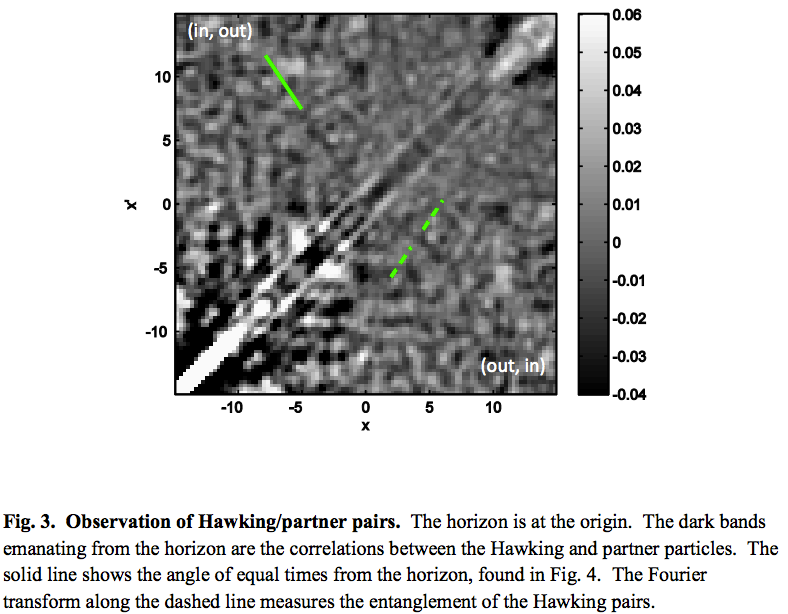
The fluid analogy for gravity has its limits, of course. While the waves of the fluid behave like they would in the presence of gravitational fields, the fluid itself doesn’t behave like a gravitational field. In General Relativity, space-time itself is dynamical and reacts to the particles moving inside it. The fluid also reacts in response to the waves, but its reaction is different, at least in all cases that have been found so far. This means that right now one can only simulate gravitational systems that are either not time-dependent, or whose time-dependence is known.
It is intriguing that this relation between gravity and fluid dynamics can be made mathematically precise. It seems to suggest that gravity itself might arise from the interaction of many constituents. Perhaps space-time isn’t as immaterial as we thought.
Leave your comments on our forum, support Starts With A Bang! on Patreon (we’re just $90 from commissioning a poster), and pre-order our first book, Beyond The Galaxy, today!



